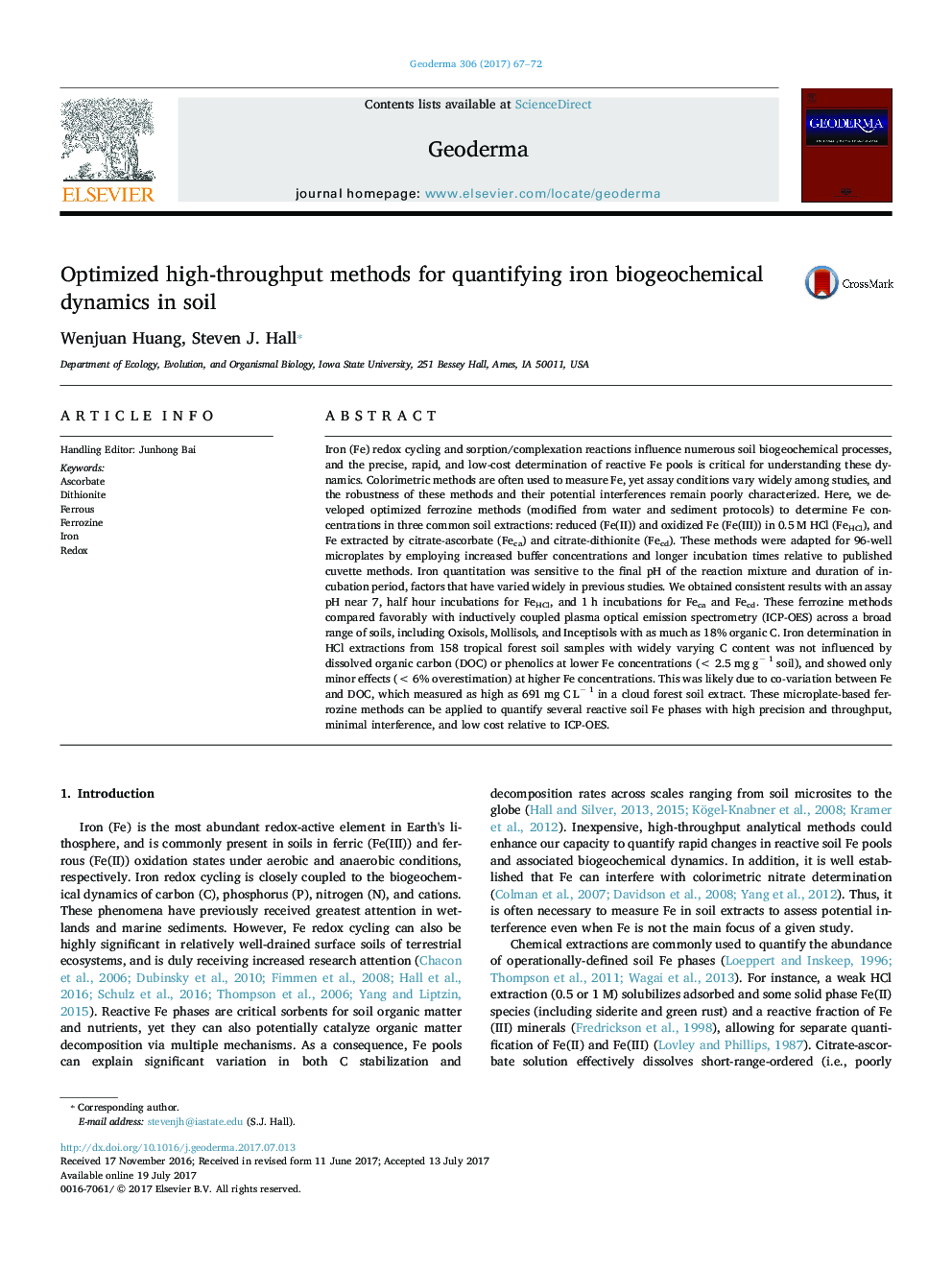| کد مقاله | کد نشریه | سال انتشار | مقاله انگلیسی | نسخه تمام متن |
|---|---|---|---|---|
| 5770457 | 1629411 | 2017 | 6 صفحه PDF | دانلود رایگان |
- We optimized colorimetric assays to accurately quantify Fe in three soil extractions.
- Fe measurements were little affected by DOC and phenolics.
- Careful consideration of assay pH and incubation time was critical.
- Microplate assays allow soil Fe analysis at high precision and low cost relative to ICP-OES.
Iron (Fe) redox cycling and sorption/complexation reactions influence numerous soil biogeochemical processes, and the precise, rapid, and low-cost determination of reactive Fe pools is critical for understanding these dynamics. Colorimetric methods are often used to measure Fe, yet assay conditions vary widely among studies, and the robustness of these methods and their potential interferences remain poorly characterized. Here, we developed optimized ferrozine methods (modified from water and sediment protocols) to determine Fe concentrations in three common soil extractions: reduced (Fe(II)) and oxidized Fe (Fe(III)) in 0.5 M HCl (FeHCl), and Fe extracted by citrate-ascorbate (Feca) and citrate-dithionite (Fecd). These methods were adapted for 96-well microplates by employing increased buffer concentrations and longer incubation times relative to published cuvette methods. Iron quantitation was sensitive to the final pH of the reaction mixture and duration of incubation period, factors that have varied widely in previous studies. We obtained consistent results with an assay pH near 7, half hour incubations for FeHCl, and 1 h incubations for Feca and Fecd. These ferrozine methods compared favorably with inductively coupled plasma optical emission spectrometry (ICP-OES) across a broad range of soils, including Oxisols, Mollisols, and Inceptisols with as much as 18% organic C. Iron determination in HCl extractions from 158 tropical forest soil samples with widely varying C content was not influenced by dissolved organic carbon (DOC) or phenolics at lower Fe concentrations (< 2.5 mg gâ 1 soil), and showed only minor effects (< 6% overestimation) at higher Fe concentrations. This was likely due to co-variation between Fe and DOC, which measured as high as 691 mg C Lâ 1 in a cloud forest soil extract. These microplate-based ferrozine methods can be applied to quantify several reactive soil Fe phases with high precision and throughput, minimal interference, and low cost relative to ICP-OES.
Journal: Geoderma - Volume 306, 15 November 2017, Pages 67-72
